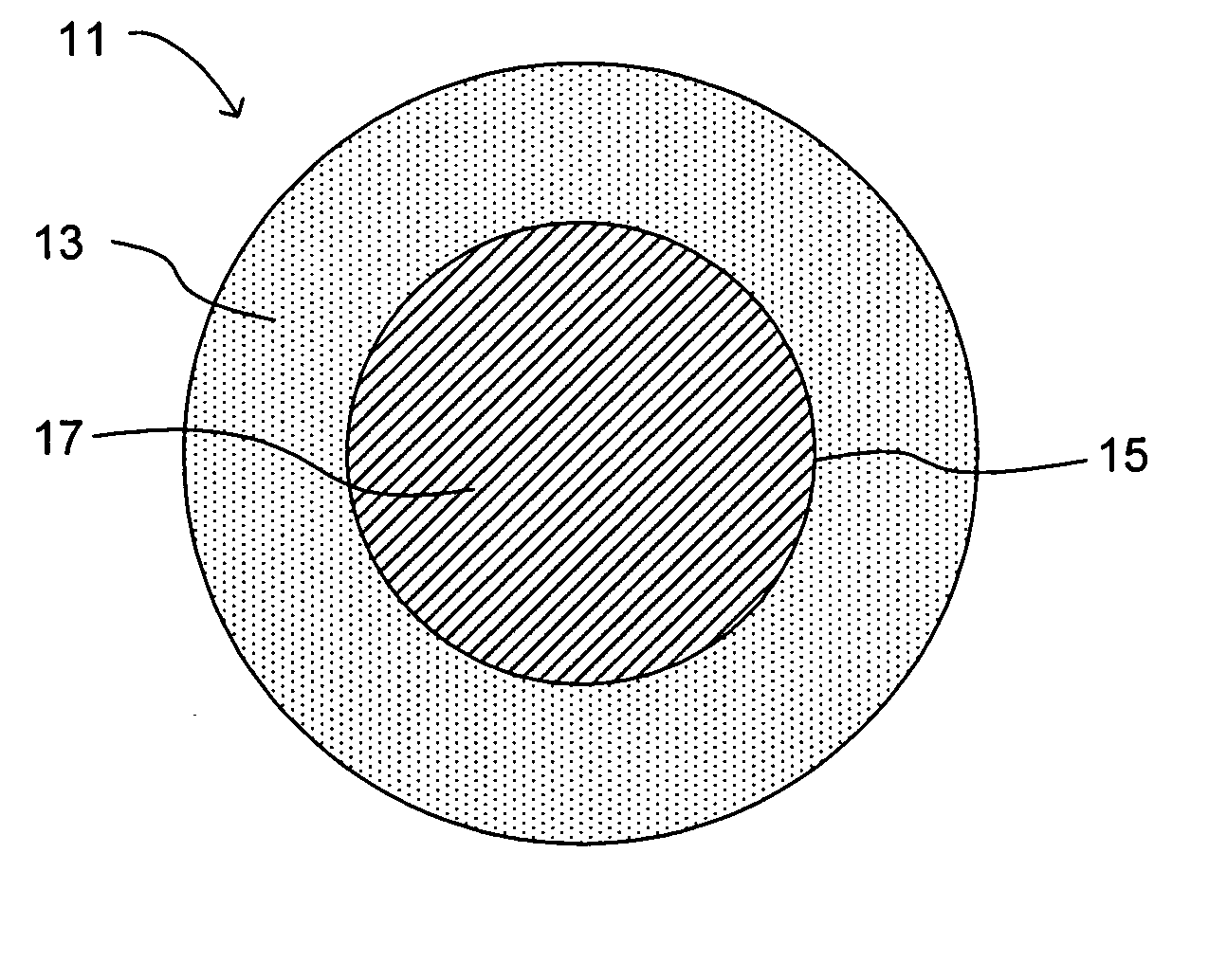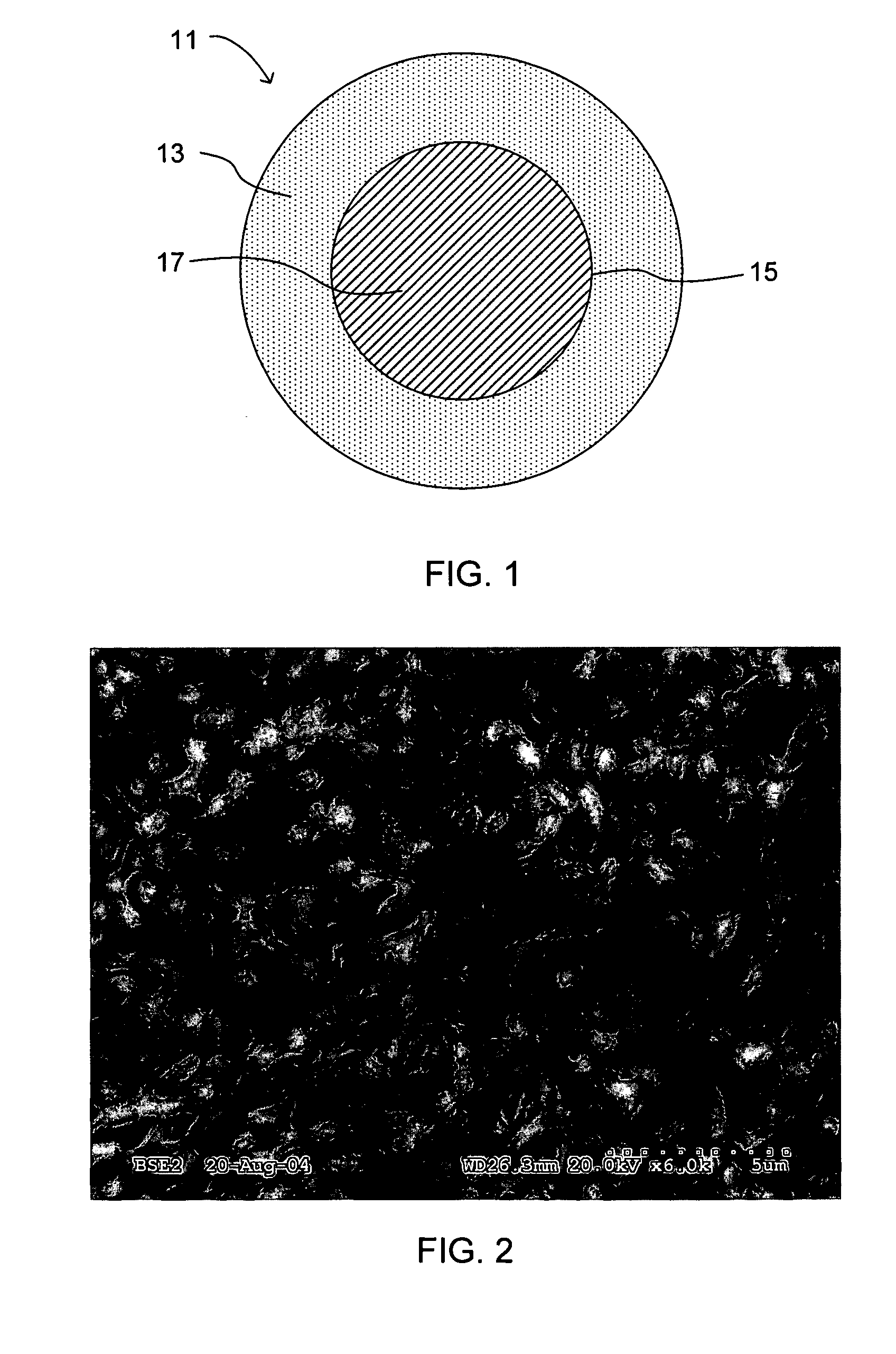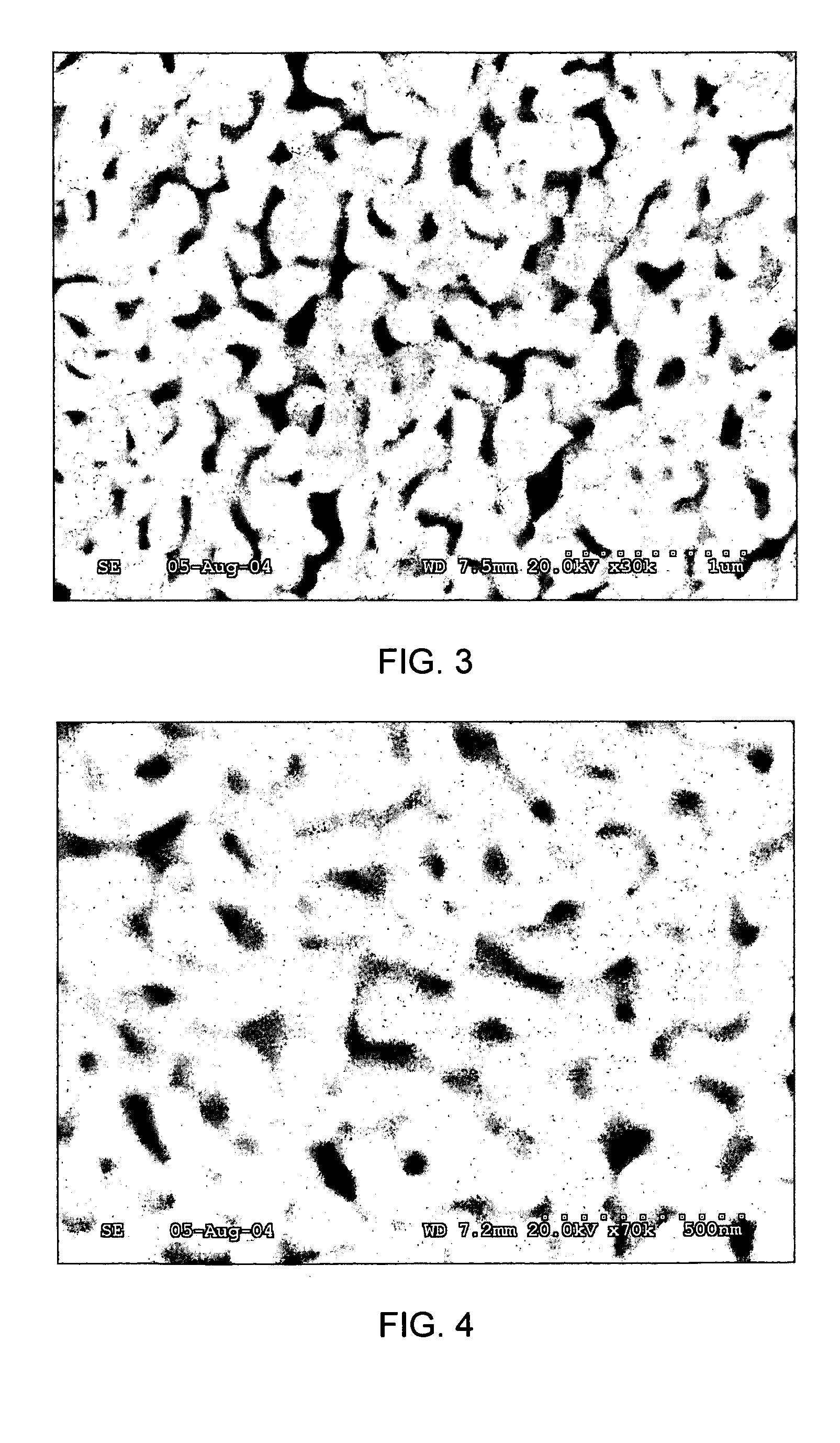Molecular decomposition processes for the synthesis of nanosize metallic powders
a technology of metallic powders and decomposition processes, which is applied in the direction of aluminium oxides/hydroxides, inorganic chemistry, chromium oxides/hydrates, etc., can solve the problems of loss of kinetic energy, cluster size in the micron, and agglomeration, etc., and achieves high strength, fine microstructure, and high solubility.
- Summary
- Abstract
- Description
- Claims
- Application Information
AI Technical Summary
Benefits of technology
Problems solved by technology
Method used
Image
Examples
example 1
[0069] Gold and copper powders having average particle sizes of about 50 microns were mixed in an atomic ratio of 1:3 (weight ratio of 2.5:2.4195) to form a powdered mixture. The powdered mixture was pressed and placed in a quartz boat, which was placed in a quartz tube and then inserted into a tube furnace. The furnace temperature was raised to 1100° C. while circulating hydrogen gas through the quartz tube to prevent oxidation of copper. The temperature was maintained at 1100° C. for 30 minutes to allow gold and copper to melt and form a substantially homogenous solution. Subsequently, the furnace temperature was lowered rapidly to 370° C. within about 40 minutes. The sample was maintained at 370° C. for about 96 hours to form an ordered superlattice of AuCu3 metal alloy. The sample was then cooled to room temperature. One sample was also prepared in the disordered (random) state, by simply cooling to room temperature, without the thermal treatment at 370° C.
[0070] The copper por...
example 2
[0072] Synthesis of nanosize palladium can be accomplished using BaPd, which is an intermetallic line compound. An amount of BaPd is formed by conventional powder metallurgy. The alloy is then reacted with HCl for an extended time of about 20 hours. It is readily shown that the ΔG0 for the reaction,
BaCl2+Pd→Ba+PdCl2
is positive suggesting that the first compound to be formed is BaCl2. The BaCl2 formed dissolves into water to form nanosize palladium powder. The palladium powder is nanosize and continues to remain nanosize since palladium has a negligible solubility in water. Thus, as long as the concentration of HCl is low, and there is ample BaPd to react with the HCl, PdCl2 will not form. Note that this process differs from the synthesis of palladium by the reduction of PdCl2. In the latter case, particle growth of Pd readily occurs since the deposition of Pd on the already formed Pd powder continues to occur as PdCl2 in solution reacts with a reducing agent, e.g., an alkali meta...
PUM
| Property | Measurement | Unit |
|---|---|---|
| Time | aaaaa | aaaaa |
| Time | aaaaa | aaaaa |
| Particle size | aaaaa | aaaaa |
Abstract
Description
Claims
Application Information
 Login to View More
Login to View More - R&D
- Intellectual Property
- Life Sciences
- Materials
- Tech Scout
- Unparalleled Data Quality
- Higher Quality Content
- 60% Fewer Hallucinations
Browse by: Latest US Patents, China's latest patents, Technical Efficacy Thesaurus, Application Domain, Technology Topic, Popular Technical Reports.
© 2025 PatSnap. All rights reserved.Legal|Privacy policy|Modern Slavery Act Transparency Statement|Sitemap|About US| Contact US: help@patsnap.com



